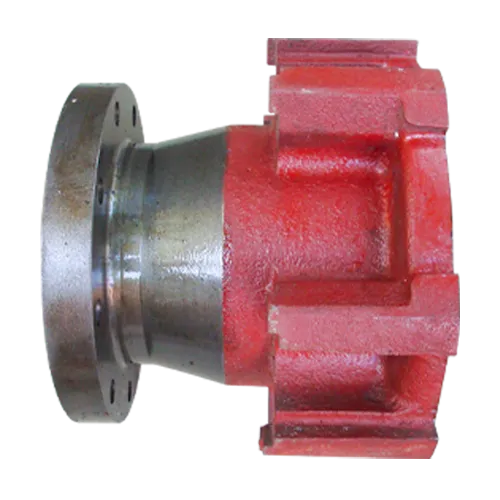Mobile:+86-311-808-126-83
Email:info@ydcastings.com
steel sand casting
Steel Sand Casting An Overview of the Process and Applications
Steel sand casting is a ubiquitous manufacturing method that allows for the creation of intricate shapes and components by pouring molten steel into sand molds. This process has been employed for centuries and continues to be a vital technique in various industries due to its versatility and efficiency. From automotive parts to machine components, the applications of sand casting are vast, making it an essential aspect of modern manufacturing.
The Sand Casting Process
The sand casting process involves several key steps that ensure the final product meets specified design requirements. It begins with the creation of a pattern, which is a replica of the object to be cast. Patterns can be made from various materials, including wood, metal, or plastic, and are typically slightly larger than the final size to account for shrinkage as the metal cools.
Once the pattern is prepared, a mold is created by packing sand around it. The sand used in the process is often mixed with a binder to help it maintain its shape. After the sand has hardened, the pattern is removed, leaving a cavity that mirrors the desired shape. The mold is then assembled and secured for the pouring of molten steel.
Molten steel is produced by heating steel scrap in an electric arc furnace or a induction furnace until it reaches a liquid state, typically between 2600°F and 2800°F (1425°C to 1538°C). Once the steel reaches the appropriate temperature, it is poured into the prepared mold through a gating system, allowing it to fill the cavity completely.
Cooling is a critical stage; the steel must be allowed to solidify, which can take anywhere from a few minutes to several hours, depending on the thickness and size of the casting. After the steel has cooled, the sand mold is broken away, revealing the cast part. Final touches, such as cleaning, machining, and inspection, are often required to achieve the desired finish and tolerances.
steel sand casting

Advantages of Steel Sand Casting
One of the primary advantages of steel sand casting is its ability to produce complex geometries that are often impossible to achieve with other manufacturing methods. The flexibility of sand molds allows for intricate designs, making it ideal for applications in industries such as aerospace, automotive, and construction.
Moreover, sand casting is highly cost-effective, especially for small to medium production runs. The materials required for the sand molds are relatively inexpensive, and the process itself does not necessitate expensive tooling or machinery. This accessibility attracts companies looking to manufacture high-quality parts without a substantial upfront investment.
Another significant benefit is the high strength and durability of cast steel components. Steel, known for its mechanical properties, can withstand considerable stress, making it suitable for structural applications. With advances in technology, manufacturers can now produce high-performance castings that meet strict industry standards.
Applications of Steel Sand Castings
Steel sand casting is integral in various sectors. In the automotive industry, it's used to create engine blocks, transmission cases, and brake components. The construction industry benefits from sand castings in the form of fittings, clamps, and structural components. Additionally, power generation equipment often relies on cast steel parts for reliability and performance.
In conclusion, steel sand casting is a time-tested manufacturing technique that combines flexibility and cost-effectiveness with the strength of steel. As technology continues to evolve, so too will the methods and applications of sand casting, ensuring its place as a fundamental process in modern manufacturing. Whether for intricate designs or robust components, steel sand casting remains an invaluable method for producing high-quality products across diverse industries.
-
Why Should You Invest in Superior Pump Castings for Your Equipment?NewsJun.09,2025
-
Unlock Performance Potential with Stainless Impellers and Aluminum End CapsNewsJun.09,2025
-
Revolutionize Your Machinery with Superior Cast Iron and Aluminum ComponentsNewsJun.09,2025
-
Revolutionize Fluid Dynamics with Premium Pump ComponentsNewsJun.09,2025
-
Optimizing Industrial Systems with Essential Valve ComponentsNewsJun.09,2025
-
Elevate Grid Efficiency with High-Precision Power CastingsNewsJun.09,2025











